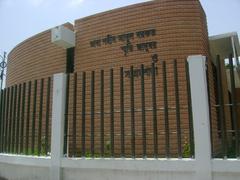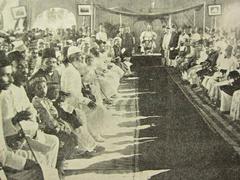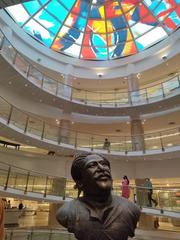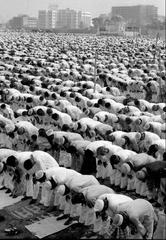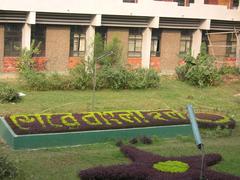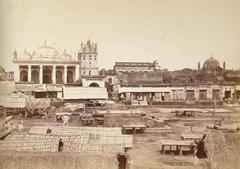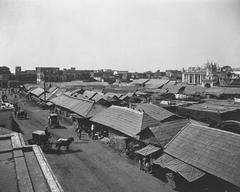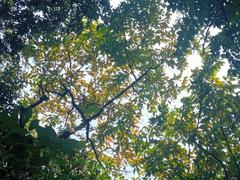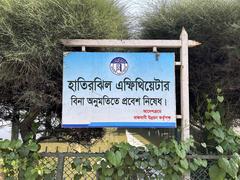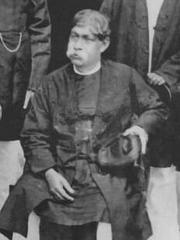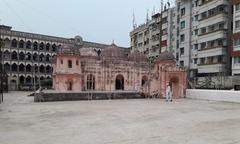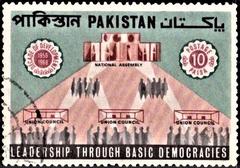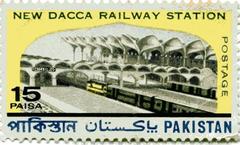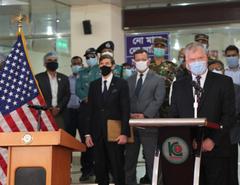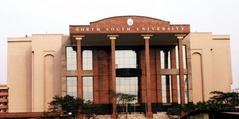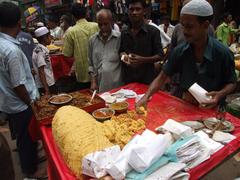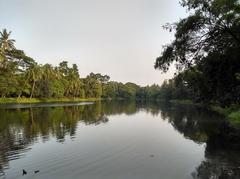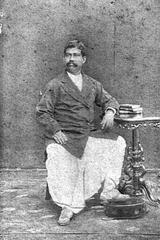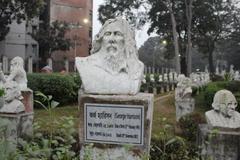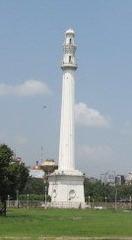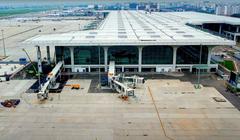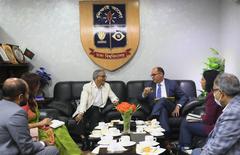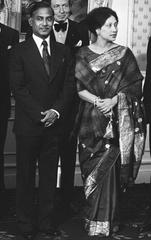Azimpur Graveyard Visiting Hours, Tickets, and Dhaka Historical Sites Guide
Date: 14/06/2025
Introduction
Azimpur Graveyard, centrally located in Dhaka, Bangladesh, is the city’s largest and oldest burial ground, spanning over 32 acres and containing approximately 26,000 graves. Established during the early 19th century, it stands as a living testament to Bangladesh’s complex cultural, architectural, and political heritage. From the resting places of Language Movement martyrs to the modern digital transformation led by the Dhaka South City Corporation, Azimpur Graveyard embodies both the nation’s history and its forward-looking approach to heritage preservation.
This comprehensive guide provides detailed information on Azimpur Graveyard’s visiting hours, ticketing policy, notable burials, architectural highlights, visitor etiquette, and the latest advancements in digital graveyard management. Whether you are a history enthusiast, cultural explorer, or traveler seeking to understand Dhaka’s historical sites, this resource will help you plan a meaningful, respectful, and insightful visit.
Table of Contents
- Introduction
- Origins and Historical Context
- Evolution Through Colonial and Post-Colonial Eras
- Notable Burials and National Significance
- Architectural Features and Modern Developments
- Digital Transformation and Virtual Access
- Visiting Information: Hours, Tickets, and Etiquette
- Site Management, Security, and Preservation
- Accessibility, Facilities, and Travel Tips
- Rituals, Customs, and Community Engagement
- Nearby Attractions and Recommendations
- Educational and Cultural Impact
- Frequently Asked Questions (FAQ)
- Conclusion and Call to Action
- References
Origins and Historical Context
Azimpur Graveyard was established in 1807, making it one of Bangladesh’s oldest cemeteries. Its location in what was once a Mughal-era residential area for nobles reflects its early association with Dhaka’s elite. As the city expanded through the British colonial period, Azimpur became the principal burial ground for prominent citizens, integrating various architectural and cultural influences (hollymelody.com; tbsnews.net).
Evolution Through Colonial and Post-Colonial Eras
Mughal and Early Colonial Influence
The earliest graves display distinctive Mughal funerary architecture—domes, arches, and floral motifs—mirroring stylistic features found in landmarks like Lalbagh Fort. The British colonial era introduced Victorian and Edwardian elements, such as brickwork and wrought iron, blending local and Western traditions (kurby.ai).
Expansion and Urban Integration
Throughout the 19th and 20th centuries, the graveyard expanded to accommodate the growing population. Today, permanent graves number around 3,900, with temporary plots being reused due to space constraints. The grounds are characterized by moss-covered brick walls, shaded avenues, and a tranquil atmosphere that offers respite from the urban bustle (tbsnews.net; vymaps.com).
Notable Burials and National Significance
Azimpur Graveyard is the final resting place for many of Bangladesh’s most revered figures, including:
- Language Movement martyrs: Shafiur Rahman, Abul Barkat, and others, whose sacrifices in 1952 are commemorated annually.
- Cultural icons: Poet Sufia Kamal and National Professor Anisuzzaman (bdnews24.com).
- Religious leaders and intellectuals.
On International Mother Language Day (February 21), the graveyard becomes a site of national remembrance, with rituals and tributes organized by officials, diplomats, and citizens (bssnews.net).
Architectural Features and Modern Developments
Traditional and Colonial Styles
Azimpur’s headstones and mausoleums span centuries of architectural evolution. Mughal domes, colonial-era brickwork, and modern minimalist designs coexist, reflecting the graveyard’s layered history (kurby.ai).
Recent Renovation and Landscaping
The graveyard underwent significant renovation in 2015. The adjacent Mayor Mohammad Hanif Jame Mosque, rebuilt by Rafiq Azam and Shatotto Architecture, is a notable addition—melding traditional Mughal and contemporary styles in its red brick structure and open courtyards (archdaily.com). Landscaping efforts have created a green, accessible environment for reflection and commemoration (tbsnews.net).
Digital Transformation and Virtual Access
In June 2025, the Dhaka South City Corporation launched a pioneering digital graveyard management system for Azimpur Graveyard (The Business Standard). Through gms.dscc.gov.bd, visitors and relatives can:
- Search a comprehensive grave database.
- View virtual maps of grave locations.
- Obtain burial certificates and documentation online.
This initiative streamlines management, increases transparency, and provides global access for the Bangladeshi diaspora. It has also improved record-keeping, scheduling, and site governance, positioning Azimpur Graveyard as a digital heritage model (The Business Standard).
Visiting Information: Hours, Tickets, and Etiquette
- Visiting Hours: Open daily from 8:00 AM to 6:00 PM; extended hours on Fridays and religious holidays.
- Entry Fee: Free for all visitors. Donations for maintenance are appreciated.
- Location: 38/10 Azimpur Road, Dhaka 1205; accessible by rickshaw, taxi, or public transport (OpenCorpData).
- Accessibility: Main pathways are maintained for visitors of all ages; some areas may be uneven.
- Etiquette: Remain quiet and respectful; dress modestly; avoid loud conversations, music, or disruptive behavior. Photography is allowed for personal use, but seek permission before photographing graves or mourners (usurnsonline.com).
- Prohibited Activities: Eating on graves, sitting or climbing on headstones, littering, or using the site for entertainment purposes are not allowed.
Site Management, Security, and Preservation
Azimpur Graveyard is managed by the Dhaka South City Corporation. The DSCC oversees plot allocation, maintenance, and security, and employs a digital management platform for record-keeping and legal oversight (The Business Standard). On national holidays and large events, security is reinforced in coordination with law enforcement (Dhaka Diplomat).
Preservation challenges include urban encroachment and limited space, leading to the reuse of temporary graves. Continuous landscaping, cleaning, and restoration projects are prioritized, especially for graves of national significance (tbsnews.net).
Accessibility, Facilities, and Travel Tips
- Facilities: Shaded seating, water points, and clear signage are available; public restrooms are limited.
- Mobility: Some paths are unpaved; visitors with mobility challenges may require assistance.
- Travel Tips: Bring water, wear sturdy shoes, and plan your visit during daylight. Combine your trip with nearby sites like Dhaka University, Lalbagh Fort, or the Liberation War Museum for a richer experience.
Rituals, Customs, and Community Engagement
Azimpur Graveyard is a multi-faith cemetery, accommodating Muslims, Hindus, Christians, Buddhists, and indigenous communities. Traditional rituals—prayers, Quran recitations, and flower offerings—are common, especially on national commemorative days. Community groups and cultural organizations often organize processions, educational events, and prayer gatherings, strengthening social bonds and intergenerational dialogue (bssnews.net).
Nearby Attractions and Recommendations
Enhance your visit by exploring:
- Dhaka University and Curzon Hall
- Central Shaheed Minar
- Star Mosque and Lalbagh Fort
- Liberation War Museum
These sites, located within a short distance, offer deeper insights into Dhaka’s historical and cultural landscape.
Educational and Cultural Impact
Azimpur Graveyard serves as an open-air archive of Bangladesh’s modern history. Occasional guided tours, especially during national observances, foster educational engagement. The graveyard also influences literature, art, and public discourse related to memory, identity, and heritage (bssnews.net).
Frequently Asked Questions (FAQ)
Q: What are the visiting hours of Azimpur Graveyard?
A: Open daily from 8:00 AM to 6:00 PM; hours may be extended on special occasions.
Q: Is there an entry fee or ticket required?
A: No, entry is free; donations are welcomed.
Q: Are guided tours available?
A: Not regularly, but may be arranged through local operators or during national events.
Q: Is the graveyard accessible for disabled visitors?
A: Some paved paths exist, but assistance may be needed for full access.
Q: Is photography allowed?
A: Yes, for personal use; always respect privacy and obtain permission when necessary.
Q: Can I visit graves virtually?
A: Yes, use the digital graveyard management system for virtual access.
Conclusion and Call to Action
Azimpur Graveyard is a profound Dhaka historical site, interweaving rich history, architectural diversity, and enduring cultural significance. The integration of digital services enhances access and preservation, making it both a physical and virtual archive for visitors and the global Bangladeshi community.
To ensure a respectful and meaningful experience, observe visiting hours, follow site etiquette, and use official resources for planning your visit. Explore related Dhaka heritage destinations and stay updated on commemorative events by following relevant platforms and using the digital graveyard management system.
For more in-depth guides and updates on Dhaka’s historical sites, download the Audiala app, connect with us on social media, and consult our curated articles.
Visuals are recommended: Use alt tags such as “Azimpur Graveyard historical tombs,” “Language martyrs’ graves at Azimpur,” and “Mayor Mohammad Hanif Jame Mosque at Azimpur.”
References
- The Business Standard – Azimpur Graveyard Goes Virtual
- The Business Standard Habitat Feature – Landscaping for the Deceased and Living
- BSS News – National Commemoration at Azimpur Graveyard
- Usurns Online – Cemetery Etiquette
- BDNews24 – Language Movement’s Pride
- ArchDaily – Mayor Mohammad Hanif Jame Mosque Architecture
- Dhaka Diplomat – Commemoration and Security
- OpenCorpData – Azimpur Graveyard Location
- Kurby.ai – Evolution of Dhaka’s Architecture
- Vymaps – Azimpur Graveyard
